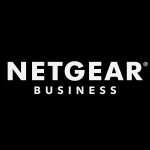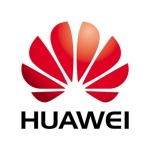What is our primary use case?
We mostly use the solution for wireless. We have a lot of wireless clients. That's the big bulk of usage as we're rapidly evolving to IOT.
How has it helped my organization?
The solution has improved our organization in the fact that we don't take as long to configure anything. It's just plug-and-play. As far as the wireless goes, it's instantaneous for anybody who wants to get on the network. We have a lot of wireless access points deployed. It works really well. It's convenient.
What is most valuable?
The ability to deploy quickly and then having one central location for all the settings are its most valuable aspects.
They've been very aggressive as far as their feature sets as their capability.
What needs improvement?
The documentation for command lines needs to be improved.
When we do firmware updates, it usually creates problems in the devices themselves. If we do a firmware upgrade, it's for sure that there will be an issue. They need to work out the kinks in that regard.
The security of the solution could really be enhanced.
It would be ideal if you could roll back firmware. It would be ideal to have something that's built-in that you can kind of just go and push a few buttons and then it reverts back to the old firmware.
For how long have I used the solution?
I've been using the solution for five years at this point.
What do I think about the stability of the solution?
The stability of the solution has room for improvement. It could be unique to us, however, there's been some instances where it's very unstable. Instabilities are something that we've been striving to reduce ever since I got here and even before that.
I believe that it has to do as much with the environment that we're putting this hardware in. When you're in a facility where the temperatures get high, the humidity sky-rockets. If you don't have hardened equipment that is designed to handle that kind of very harsh environment, you will have problems.
I try and design so that we can mitigate without spending exorbitant amounts of money to do so.
I used to sell systems to a crab fleet that fished out of Ballard Washington and go up to Alaska and we'd sell them two or three of the same systems because they'd rot. They'd throw them overboard and install new ones. It's that kind of environment that things get corroded because there's a lot of moisture. Therefore, the stability issues we face could be based on the fact that the environment is a questionable and uncontrollable factor.
What do I think about the scalability of the solution?
We have about 60 plus switches deployed right now. We have four active sites and a fifth site is coming online. I'd say probably closer to 100 switches. We've got all sizes. I tried to standardize recently on eight ports and that's a whole different conversation, however, we use them in horticulture areas.
This solution is built more for small to medium-sized businesses. The bigger the network gets, the more instability. You have to be there going through the enterprise with the edge line.
That said, it's very scalable. I have seen no blocks. You can build this as big as you want it. And we've done everything from basic switches to large point to point and a point to multi-point. So we pushed the envelope as much as we can.
However, then you get cases like switch age where it's way over the edge of the network, and then you see problems every day, that device old, but even before it got old, it seems like it had this issue.
We have clients that have hundreds of employees on the system, so there are probably users in the low hundreds at any given point of time. We also have about 80 cameras which make up endpoints as well. Most of the people using it are data entry (sales, administration, and procurement) and a few accountants. That said, it's all network-centric. Our security systems and our surveillance systems are all on the network. It's a busy place. We've got a fiber backbone between our main greenhouse and our administrative headquarters.
We do plan to expand. The site that we're bringing online is between 600,000 and 700,000 square feet of greenhouse with a 20,000 square foot building that will have processing, offices, and IT in it. It will double our capacity as far as production. We're going to grow big in 2021.
How are customer service and technical support?
We're never able to get help from technical support. We don't use them due to this. You've got to be self-reliant. That is one area that I think that they're really lacking in. They need to beef up the level of support that they offer to clients.
That said, the actual factory technical support may be weak, but the forums and the available information is humongous. You could go online and you can get an answer and that's what we do.
Which solution did I use previously and why did I switch?
The company was using the Ubiquiti Edge product initially, however, they transitioned to UniFi as they started to grow. The gentleman that made that decision is no longer here, therefore, I really don't know what the driving factor was, however, if I were to guess it had to do with the simplicity.
How was the initial setup?
The initial setup was mostly straightforward.
That's one of the key features because you don't have to do any deep thinking trying to get a complex configuration. It's by the numbers. You know if you messed up in a heartbeat. You don't have to guess. Sometimes you have to do a little digging to determine what got messed up. However, even if you have to backtrack a bit, it's very easy to deploy.
Deployment takes a couple of hours typically, from design to final implementation.
We have about 13 maintenance people that cover the entire operation of the organization and this solution.
What about the implementation team?
We didn't need an integrator or consultant. It was all done in-house. I've been an integrator for 40 years, and therefore I have a depth of knowledge. That is not very common in the industry. Usually, I'm the one that is out on accounts, however, I have been making smart systems talk to one another for many, many years.
What was our ROI?
We don't have any metrics to really analyze. It's difficult to answer a question on ROI. I'm creating something right now to asset track and service track every piece of gear that goes in. That's one of my goals by Q1. I want to have something in place so that when we start hanging this stuff, it's got a QR code on it. We know when it was installed, we know what it's comprised of, and we know when somebody touches it or has anything to do with it. We plan to create a virtual service record.
A year from now, I'd probably be able to give a lot of information about ROI, however, at this point, all I can say is, for the most part, the gear does have a good life cycle. The parts that we've had to replace have often been on us because when they get hosed down with water, they don't seem to work very well. And when they're PoE and they short out the switch we have to blame ourselves. We can't blame the hardware.
What's my experience with pricing, setup cost, and licensing?
We don't have any visibility on pricing, therefore I wouldn't be able to speculate. It's my understanding that there aren't any extra costs above the standard licensing fee.
What other advice do I have?
We're just customers. We like using the solution. We didn't want to change horses in midstream, even though a lot of people have attempted to convince us to do so.
We try to use the latest version of the solution. We update the firmware on a regular basis and so most of the time, it's maybe one version behind at the most.
We're going to basically start some life cycle management too. We're using the solution on-premise with a cloud key.
I would advise other users to take training before transitioning from the physical. You can get pretty lost in the process. Take any training you can on the system so that you understand it before you begin.
I had a friend who was Cisco certified. He taught IT and he wasn't aware of Ubiquiti and I showed it to him and he said, ''Wow, this is easy.'' It is also very powerful, they didn't skim. The only thing that I have concerns about and everyone does is cybersecurity. Especially since the pandemic hit, there's a lot of activity on the web and there's a lot of malicious stuff going on, and people are looking for the antidote.
For me, the biggest lesson I took from working with this solution has to do with understanding the product and planning. Don't go in cold and try and, you know, find the fit for a job. If it's an emergency that's one thing, however, the better you plan, the better result you're going to have.
On a scale from one to ten, it's a high 8. I don't really see any major glaring issues other than the support. They do make made a hardened version of the product for harsh environments. It's been all-around a pretty positive experience.
Which deployment model are you using for this solution?
On-premises
Disclosure: My company does not have a business relationship with this vendor other than being a customer.















